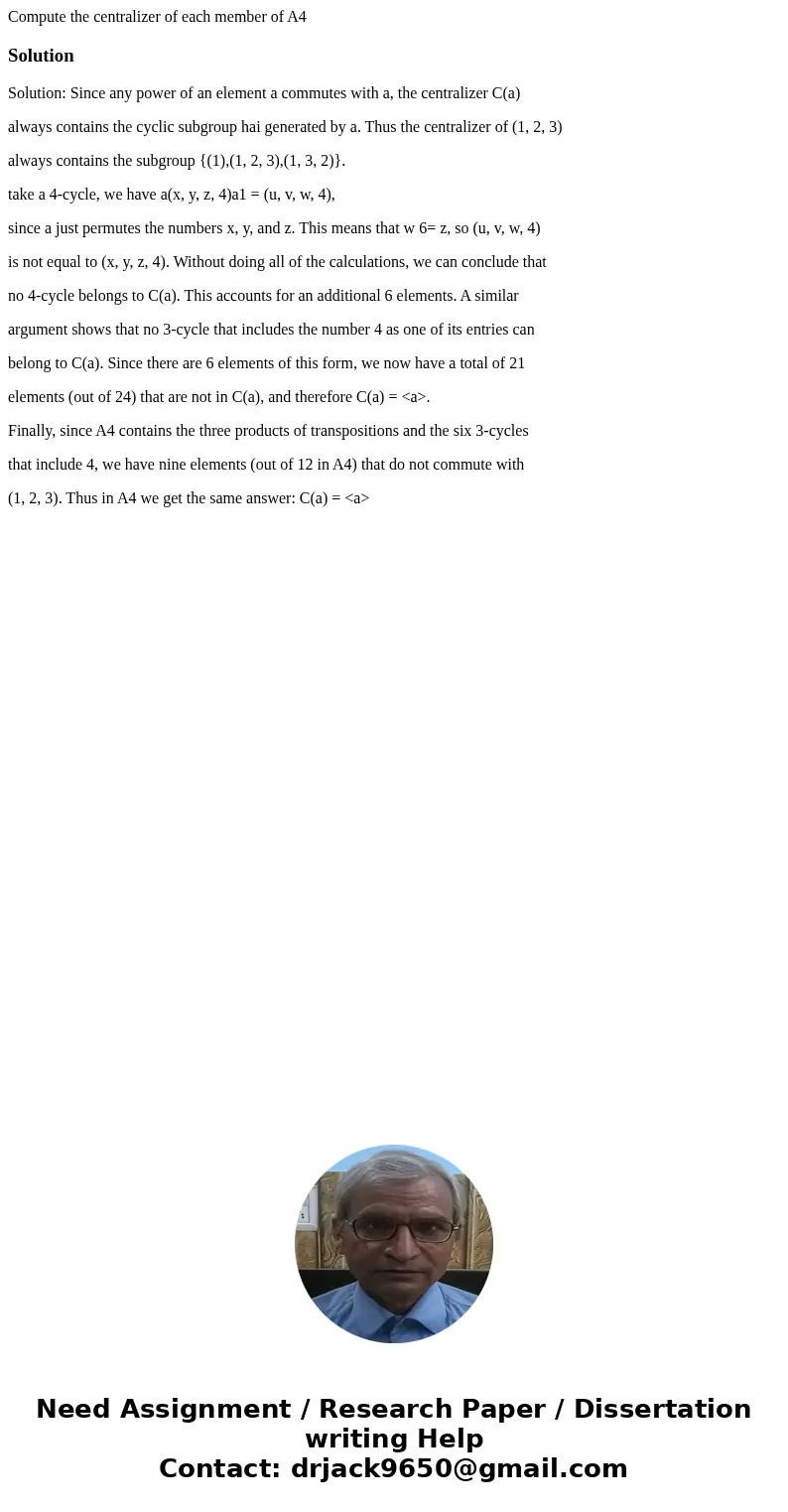Compute the centralizer of each member of A4SolutionSolution
Compute the centralizer of each member of A4
Solution
Solution: Since any power of an element a commutes with a, the centralizer C(a)
always contains the cyclic subgroup hai generated by a. Thus the centralizer of (1, 2, 3)
always contains the subgroup {(1),(1, 2, 3),(1, 3, 2)}.
take a 4-cycle, we have a(x, y, z, 4)a1 = (u, v, w, 4),
since a just permutes the numbers x, y, and z. This means that w 6= z, so (u, v, w, 4)
is not equal to (x, y, z, 4). Without doing all of the calculations, we can conclude that
no 4-cycle belongs to C(a). This accounts for an additional 6 elements. A similar
argument shows that no 3-cycle that includes the number 4 as one of its entries can
belong to C(a). Since there are 6 elements of this form, we now have a total of 21
elements (out of 24) that are not in C(a), and therefore C(a) = <a>.
Finally, since A4 contains the three products of transpositions and the six 3-cycles
that include 4, we have nine elements (out of 12 in A4) that do not commute with
(1, 2, 3). Thus in A4 we get the same answer: C(a) = <a>

 Homework Sourse
Homework Sourse